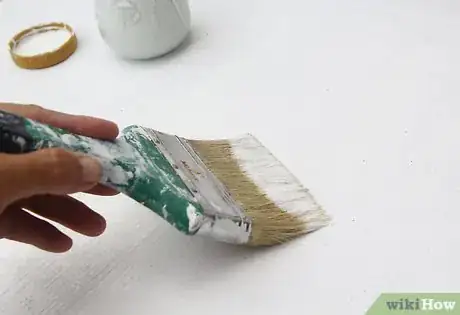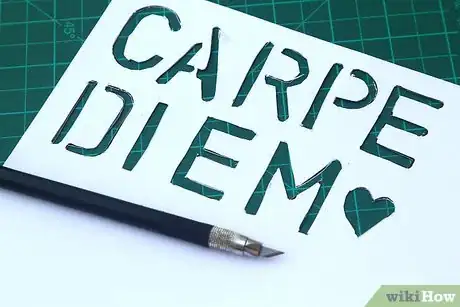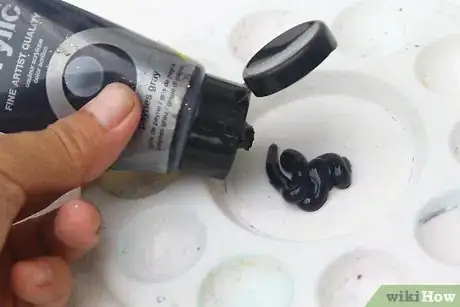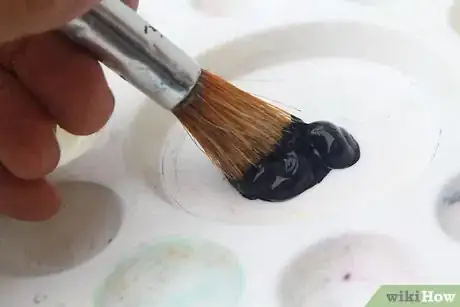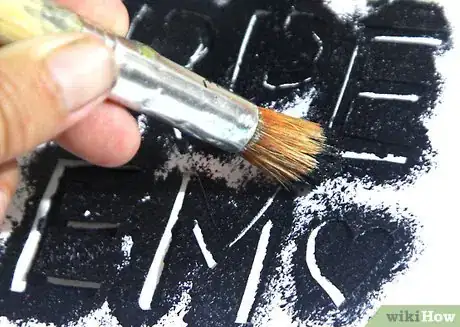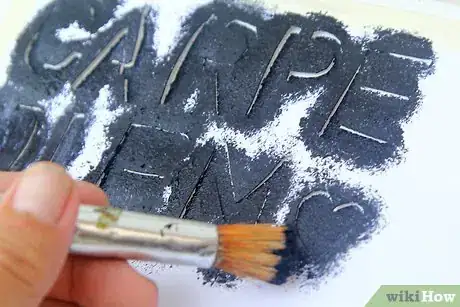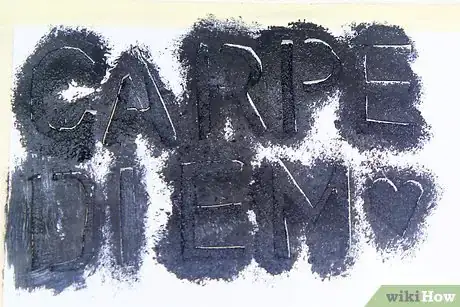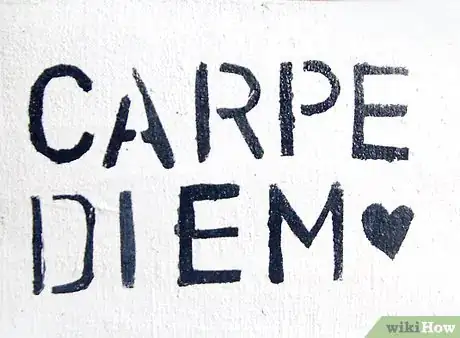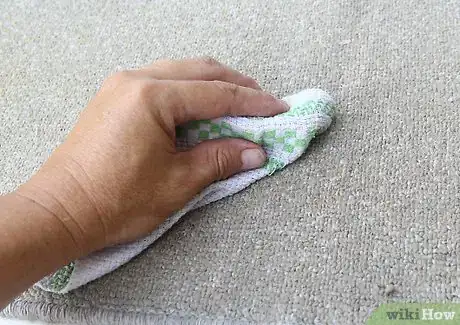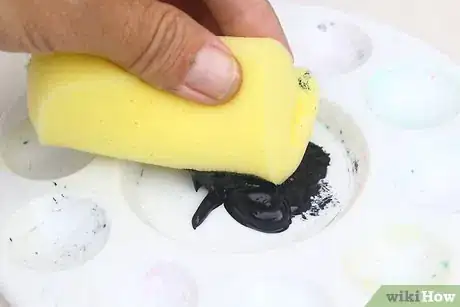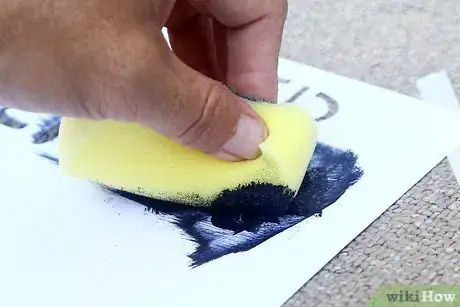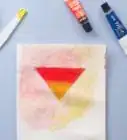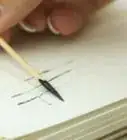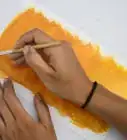X
wikiHow is a “wiki,” similar to Wikipedia, which means that many of our articles are co-written by multiple authors. To create this article, volunteer authors worked to edit and improve it over time.
This article has been viewed 49,502 times.
Learn more...
Acrylic paint is a good medium for stenciling with but care must be taken to avoid creating bulk and stiff layering that cracks and peels if bent or over time. By keeping the layers thin and light, you can use acrylic paint successfully for stenciling and get a sharp ad clear stencil.
Steps
Method 1
Method 1 of 2:
Stenciling a canvas
-
1Set up the canvas you want to print on. If you want a colored background on the canvas, paint this first.
-
2Choose a stencil. The stencil design will need to fit on the canvas. If you're overlaying stencils, plan this out in advance.[1]
- If your stencil is made from a thinner material (like printer paper), be sure to cut the edges precisely.
- Use thin slivers of tape under any edges that may fold over or stick up during the paint application, to avoid smearing or paint bleeding over the edges.
Advertisement -
3Squeeze a little bit of paint onto a palette or a foam plate. Always add less rather than more; top up as needed.
-
4Use a stencil brush. Dip into the acrylic paint but here is the trick––only dip just the edge of the brush and do not apply too much paint. Thin layers are the most effective for acrylic paint stenciling. Rub off any excess paint if needed, using paper towel or an old rag.[2]
- A stencil brush has a wide, flat surface. It's ideal for picking up a thin layer of paint. A soft stencil brush with natural bristles is the best choice; do not use synthetic ones or any other sort of paintbrush.
- Use a large stencil brush for large canvas areas, a small one for daintier and smaller areas.
-
5Dab the brush over the canvas, inside the stencil. Take a lot of care at the edges; do not push the brush under the stencil.[3]
-
6Continue until you've covered the stenciling area on the canvas. Remove the brush.
-
7Allow to dry completely. Apply other colors or areas only after the first one has dried, to avoid accidental smudging from your hand movements. Fortunately, acrylics dry quickly.
-
8Remove the stencils when done. Carefully pull away. The stenciled print will now be completed.
Advertisement
Method 2
Method 2 of 2:
Stenciling fabric
-
1Choose a stencil. The stencil design will need to fit on the fabric. If you're overlaying stencils, plan this out in advance.
- If your stencil is made from a thinner material (like printer paper), be sure to cut the edges precisely.
- Use thin slivers of tape under any edges that may fold over or stick up during the paint application, to avoid smearing or paint bleeding over the edges
-
2Use a semi-damp (or dry, both work well) sponge instead of a brush. Sponging will cover more area and lessen the risks of smears from difficult edges/angles. Mainly all types of sponge works––kitchen, makeup, etc.
-
3Lightly press the sponge onto a thin layer of paint.[4]
- Don't apply too many layers. Over application of acrylic is what leads to that bulky stiffness.
-
4Gently dab the sponge over the stencil until you're satisfied with the coverage.[5]
-
5Let dry. If you'd like, once you're stencil has dried completely, run through the quick cycle in your washing machine for extra softness.
Advertisement
Community Q&A
-
QuestionDo I have to to thin paint for stenciling?
 EnBOOKdsCommunity AnswerYou do not have to thin the paint, just use a small brush so you can see what you're doing, and give it time to dry before adding more paint.
EnBOOKdsCommunity AnswerYou do not have to thin the paint, just use a small brush so you can see what you're doing, and give it time to dry before adding more paint. -
QuestionI want to do a flower, a tree, a red truck carrying a tree, and other such things. How do you stencil with more than one color?
 Community AnswerTape over sections you do not wish to paint; wait for paint to dry before taping over other sections. Or you can free hand very carefully if you think you can do it carefully enough.
Community AnswerTape over sections you do not wish to paint; wait for paint to dry before taping over other sections. Or you can free hand very carefully if you think you can do it carefully enough. -
QuestionWhat is the best paint for stenciling on canvas?
 Reina ItogaCommunity AnswerLiquitex Basics acrylic paint is cheap, and works really well on canvas. As a tip, use painters tape to hold the stencil in place, and put a book under the canvas to make sure the stencil does not move.
Reina ItogaCommunity AnswerLiquitex Basics acrylic paint is cheap, and works really well on canvas. As a tip, use painters tape to hold the stencil in place, and put a book under the canvas to make sure the stencil does not move.
Advertisement
Things You'll Need
Method 1:
- Canvas
- Stencil
- Trimming tool
- Acrylic paint
- Stencil brush
Method 2:
- Fabric
- Stencil
- Paints
- Palette or plate (something to put small amounts of paint onto)
- Sponge
References
- ↑ https://www.mybluprint.com/article/you-will-stencil-like-a-superstar-if-you-follow-these-7-tips
- ↑ https://www.youtube.com/watch?v=TxCcTg9x0D0
- ↑ https://www.mybluprint.com/article/you-will-stencil-like-a-superstar-if-you-follow-these-7-tips
- ↑ https://www.lovelyetc.com/how-to-stencil-anything-3-secrets-to-perfect-results-every-time/
- ↑ https://www.lovelyetc.com/how-to-stencil-anything-3-secrets-to-perfect-results-every-time/
About This Article
Advertisement
